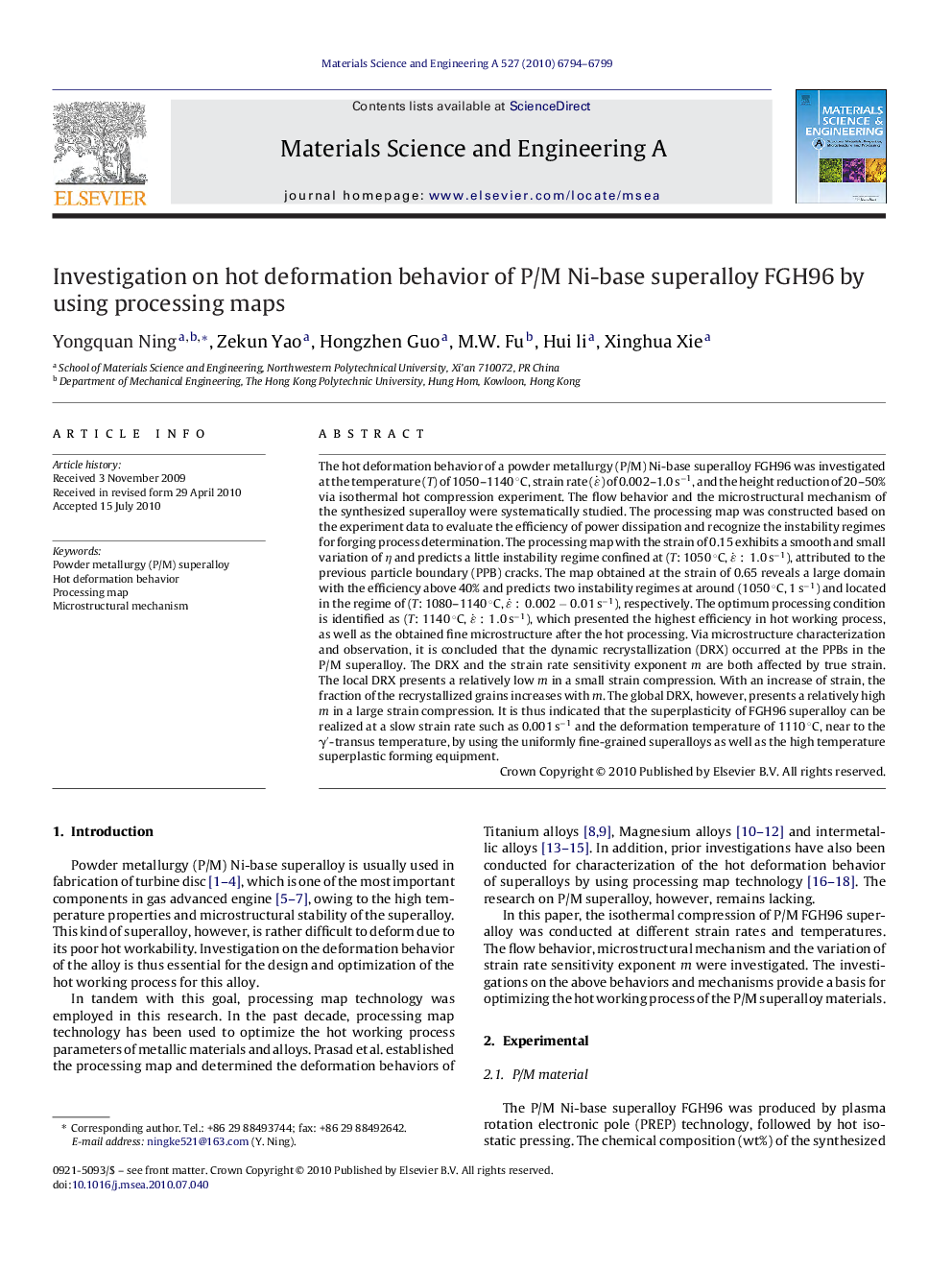| کد مقاله | کد نشریه | سال انتشار | مقاله انگلیسی | نسخه تمام متن |
|---|---|---|---|---|
| 1579849 | 1001233 | 2010 | 6 صفحه PDF | دانلود رایگان |

The hot deformation behavior of a powder metallurgy (P/M) Ni-base superalloy FGH96 was investigated at the temperature (T) of 1050–1140 °C, strain rate (ε˙) of 0.002–1.0 s−1, and the height reduction of 20–50% via isothermal hot compression experiment. The flow behavior and the microstructural mechanism of the synthesized superalloy were systematically studied. The processing map was constructed based on the experiment data to evaluate the efficiency of power dissipation and recognize the instability regimes for forging process determination. The processing map with the strain of 0.15 exhibits a smooth and small variation of η and predicts a little instability regime confined at (T: 1050 °C, ε˙: 1.0 s−1), attributed to the previous particle boundary (PPB) cracks. The map obtained at the strain of 0.65 reveals a large domain with the efficiency above 40% and predicts two instability regimes at around (1050 °C, 1 s−1) and located in the regime of (T: 1080–1140 °C, ε˙: 0.002−0.01 s−1), respectively. The optimum processing condition is identified as (T: 1140 °C, ε˙: 1.0 s−1), which presented the highest efficiency in hot working process, as well as the obtained fine microstructure after the hot processing. Via microstructure characterization and observation, it is concluded that the dynamic recrystallization (DRX) occurred at the PPBs in the P/M superalloy. The DRX and the strain rate sensitivity exponent m are both affected by true strain. The local DRX presents a relatively low m in a small strain compression. With an increase of strain, the fraction of the recrystallized grains increases with m. The global DRX, however, presents a relatively high m in a large strain compression. It is thus indicated that the superplasticity of FGH96 superalloy can be realized at a slow strain rate such as 0.001 s−1 and the deformation temperature of 1110 °C, near to the γ′-transus temperature, by using the uniformly fine-grained superalloys as well as the high temperature superplastic forming equipment.
Journal: Materials Science and Engineering: A - Volume 527, Issue 26, 15 October 2010, Pages 6794–6799